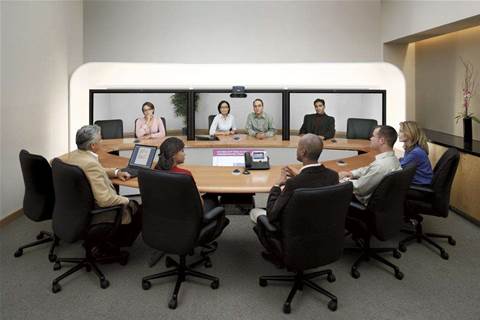Research network operator AARNet will extend its National Video Conferencing Service (NVCS) to include telepresence from October.
Under a newly announced agreement with Cisco, AARNet will facilitate high-definition video connections between its research and education customers free of charge.
AARNet planned to deploy Cisco's TelePresence Exchange System in its points of presence so it could act as a “service broker”, connecting customers without them having to grapple with the firewalls and IP addresses of external parties.
Cisco’s ANZ public sector director Ken Boal said the service would lower the barriers to entry for institutions, which would still need to purchase the vendor’s TelePresence equipment costing upwards of $15,000.
According to AARNet’s applications and services director, James Sankar, telepresence was more “immersive and lifelike” than traditional video conferencing, which could be “quite draining” after hours of use.
Since 2006, AARNet has offered multi-party conferencing, recording, 1080p desktop video conferencing, and desktop sharing as part of its NVCS, use of which has doubled year-on-year to 10,500 hours in 2010, Sankar said.
Telepresence rooms are typically designed to simulate face-to-face interactions with high-end displays, video cameras, sound systems and processors.
In the first phase of its TelePresence deployment, AARNet will facilitate connections between six Australian institutions with more than 20 end-points between them.
Those included Monash University, Swinburne University, and the CSIRO’s Parkes Observatory, which was also involved in AARNet’s 40Gbps trial last month.
Sankar expected the technology to facilitate remote lectures, research meetings, and telehealth initiatives through deployments at teaching hospitals and regional medical schools.
But users would likely come up with new answers to “the $64,000 question” of how telepresence would be used, he said.
Cisco has supplied its TelePresence equipment to PepsiCo and Internode, as well as offering telepresence as a service through partners like Telstra, Dimension Data, and Sheraton hotels.
Polycom and Huawei also offer a range of telepresence options, with the latter boasting 100 global deployments of rooms serving up to 16 people.
AARNet planned to connect to and peer with international Cisco TelePresence exchanges such as National LamdaRail, which connects 200 end-points in 65 US institutions.
In the “second phase” of the project, AARNet would also look to support technology from other vendors, as long as they used Cisco’s TelePresence Interoperability Protocol.
“This new service removes geographical barriers, providing Australia’s research and education community direct exposure to instructors, colleagues and experts across the nation,” Sankar said.
“It will sit alongside our existing high definition video bridging service, providing a launching pad for next generation video conferencing services.”





_(21).jpg&h=142&w=230&c=1&s=1)


.png&h=142&w=230&c=1&s=1)




.jpg&w=100&c=1&s=0)










